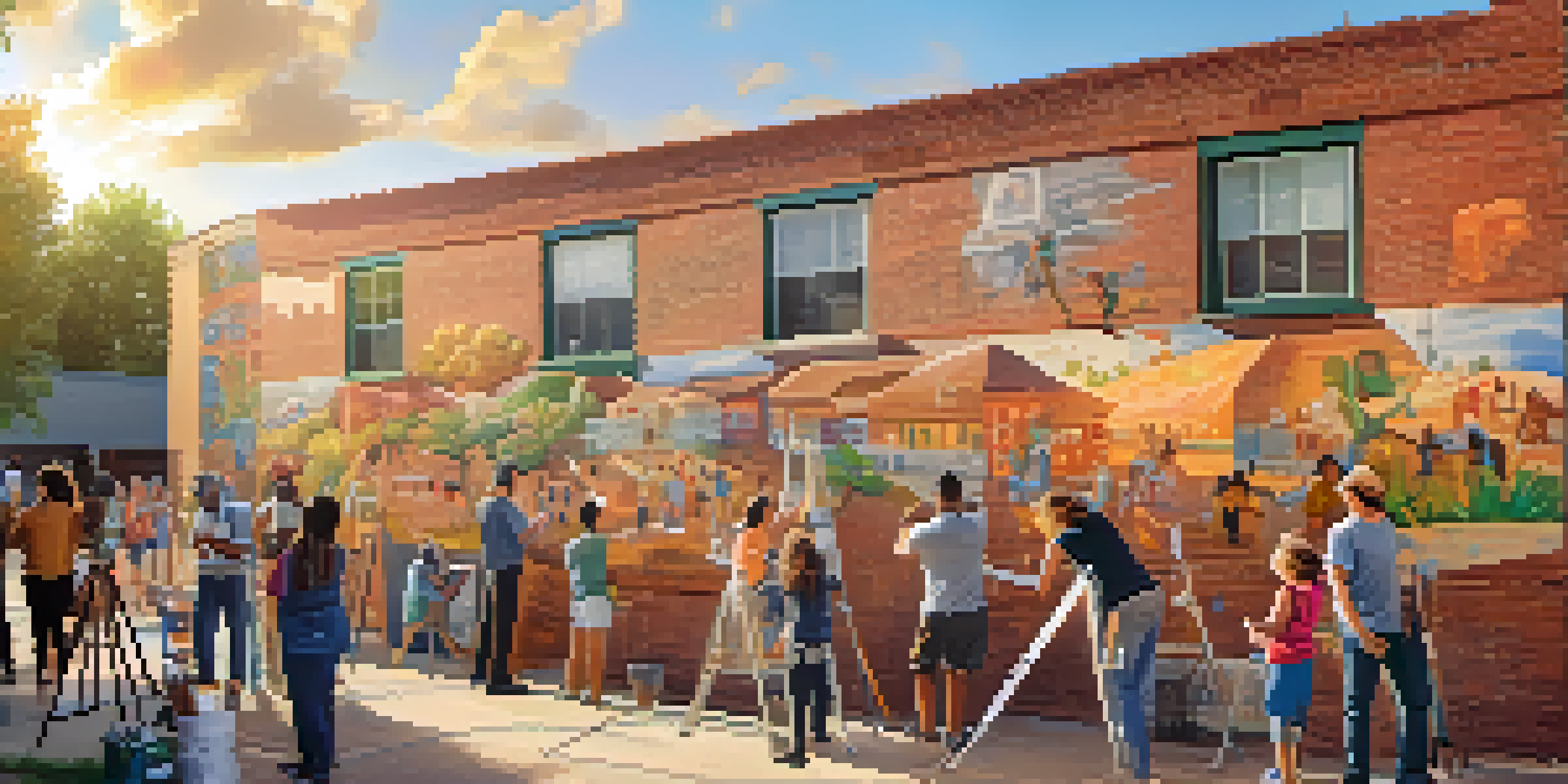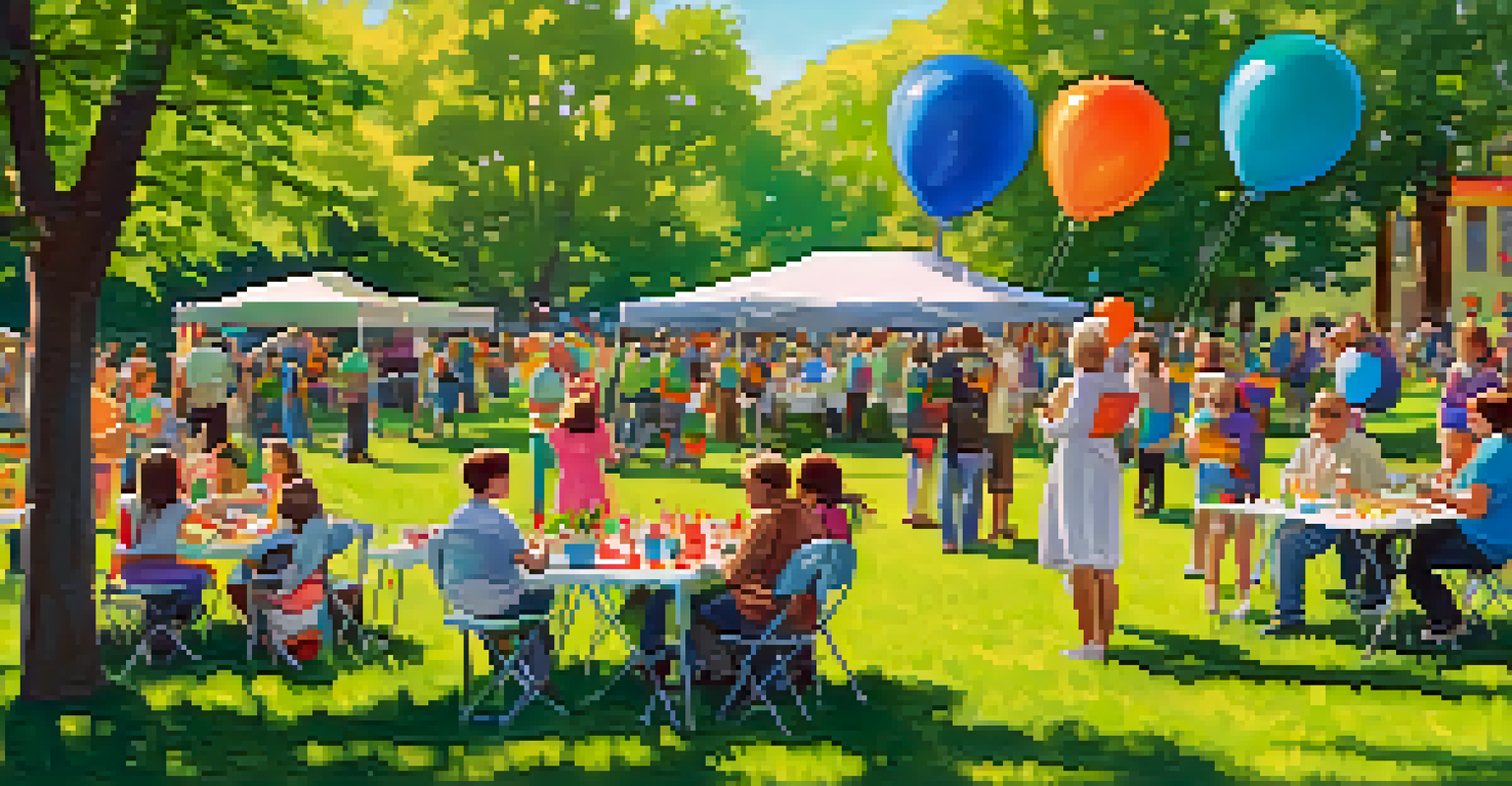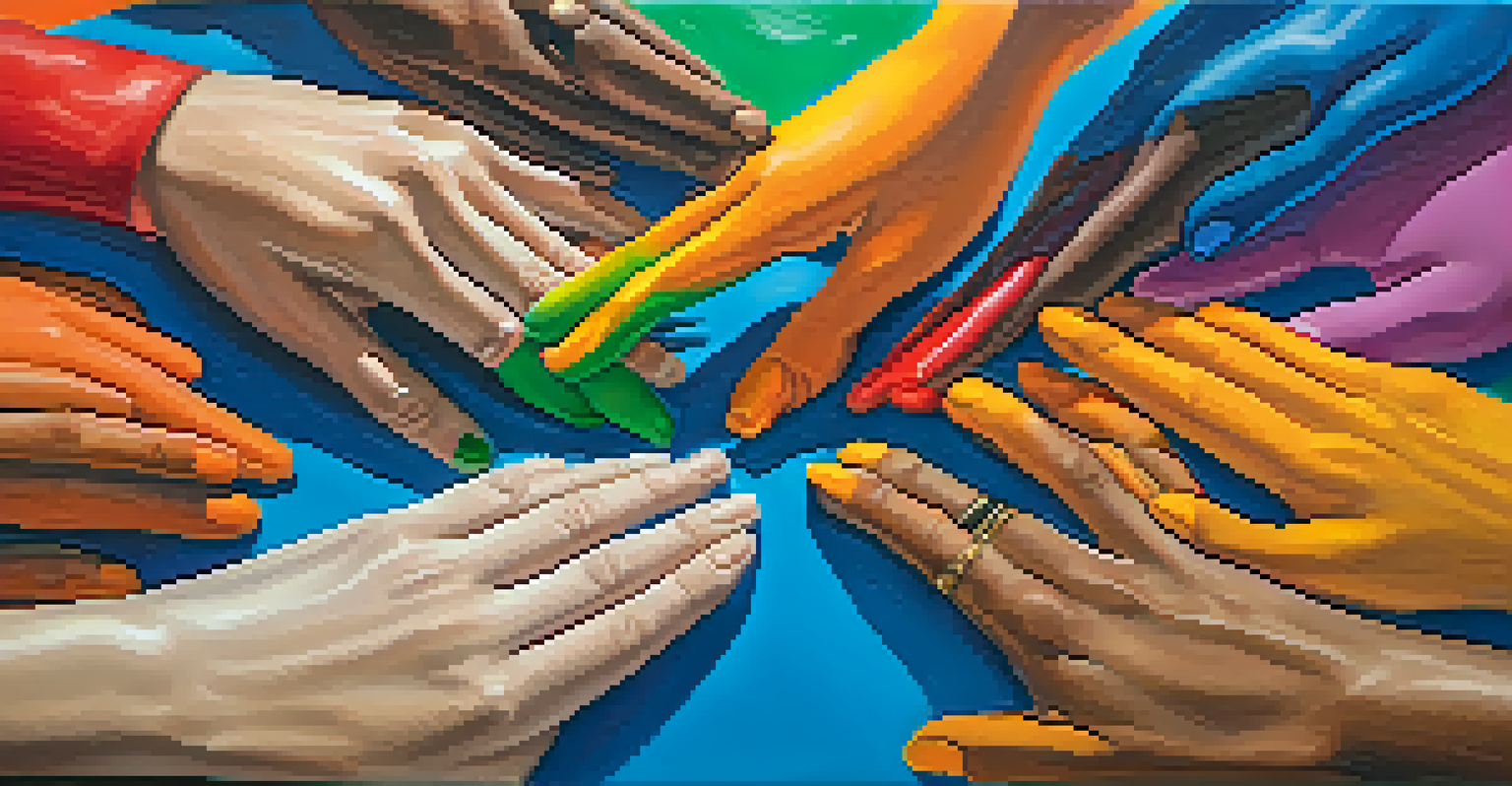Creating Community Art Projects: Engage Local Artists

Understanding the Importance of Community Art Projects
Community art projects serve as a bridge, connecting individuals through shared creativity. They foster local culture and pride, while also beautifying public spaces. When people come together to create, they not only produce art but also build relationships and strengthen community ties.
Art enables us to find ourselves and lose ourselves at the same time.
Moreover, these projects often reflect the unique identity of a neighborhood, showcasing its history and diversity. For instance, a mural depicting local landmarks can evoke a sense of nostalgia and belonging. By engaging in community art, individuals contribute to a legacy that resonates with both current residents and future generations.
Ultimately, community art projects can drive social change, addressing issues like inclusivity and representation. They offer a platform for underrepresented voices, allowing them to share their stories through visual mediums. This not only enriches the community but also promotes empathy and understanding among diverse groups.
Identifying and Involving Local Artists in Your Project
To kick off your community art project, start by identifying local artists who resonate with your vision. This can be done through social media, community boards, or local art galleries. Seek out artists whose styles and messages align with the goals of your project, ensuring a cohesive artistic direction.

Once you've identified potential artists, it's essential to reach out and invite them to collaborate. Share your ideas and listen to their thoughts, as their expertise can significantly shape the project's outcome. Remember, this is a partnership, and valuing their input will help cultivate a sense of ownership and commitment.
Community Art Builds Connections
Community art projects foster relationships and pride by uniting individuals through shared creative efforts.
Additionally, consider hosting a local artist meet-and-greet event. This not only provides an informal setting for artists to connect but also allows the community to engage and express interest in the project. Building relationships early on can lead to innovative ideas and a stronger collective effort.
Setting Clear Goals and Objectives for Your Project
Before diving into the creative process, it’s crucial to establish clear goals and objectives for your art project. Are you aiming to beautify a specific area, promote community engagement, or raise awareness about a social issue? Defining these goals will guide your planning and ensure everyone is on the same page.
Creativity is contagious, pass it on.
For instance, if your objective is to promote local history, consider involving artists who can incorporate historical elements into their work. This not only enriches the project but also educates the community. Clear objectives help in measuring success and provide a framework for evaluating the project's impact afterward.
Additionally, involving local stakeholders in goal-setting can enhance the project’s relevance. By soliciting feedback from community members, you can ensure that the project resonates with their needs and desires. This collaborative approach fosters a sense of belonging and ownership among participants.
Funding and Resource Management for Community Art Projects
Securing funding is a vital step in bringing your community art project to life. Look for local grants, sponsorships from businesses, or crowdfunding options to gather the necessary resources. Many local governments and arts organizations offer financial support for projects that engage the community, so be sure to explore these avenues.
In addition to financial resources, consider what materials and spaces you will need for the project. Collaborate with local businesses to source supplies or even seek donations from community members. Establishing partnerships can significantly reduce costs and build goodwill within the community.
Engage Local Artists for Success
Involving local artists in the planning and execution of projects cultivates ownership and enhances the artistic direction.
Moreover, maintaining a clear budget and tracking expenses will ensure that your project remains financially viable. Transparency in funding and resource management not only builds trust but also encourages further support from local stakeholders. A well-planned financial strategy can make all the difference in the success of your project.
Promoting Your Community Art Project Effectively
Once your project is underway, promoting it effectively is key to attracting community participation. Utilize social media platforms to share updates, engage with local residents, and create buzz around the project. Incorporating visuals of the artists at work can create excitement and anticipation.
Additionally, consider collaborating with local media outlets to gain broader exposure. Press releases, interviews, or feature articles can highlight your project and its significance to the community. Engaging local influencers can also amplify your reach and encourage more people to get involved.
Don’t forget about traditional promotional methods, such as flyers and community bulletin boards. These can be particularly effective in neighborhoods with limited digital access. A multi-channel approach ensures that you reach diverse segments of the community and maximizes participation.
Fostering Community Engagement Throughout the Project
Engaging the community throughout the art project is essential for its success. Host workshops, open studios, or public meetings where residents can contribute ideas and feedback. This not only encourages participation but also allows the community to feel invested in the project’s outcome.
Creating opportunities for community members to get hands-on experience can deepen their connection to the project. Consider organizing volunteer days where locals can help with painting, installation, or planning activities. These shared experiences foster camaraderie and a sense of pride in the collective effort.
Evaluate Impact for Future Growth
Assessing the outcomes of community art projects through feedback and documentation helps inform and inspire future initiatives.
Regular updates and communication about the project’s progress can also maintain excitement. Share successes and challenges through newsletters or social media posts, inviting the community to stay engaged. This transparency builds trust and encourages ongoing participation, transforming the project into a community-wide celebration.
Evaluating the Impact of Your Community Art Project
After your community art project is complete, evaluating its impact is crucial for future initiatives. Gather feedback from participants, local artists, and community members to understand their experiences and perspectives. This insight can highlight what worked well and what could be improved for future projects.
Consider conducting surveys or hosting follow-up meetings to facilitate open discussions. This not only provides valuable data but also reinforces community ties by showing that their input is valued. Reflecting on the project allows you to celebrate successes and learn from challenges.

Moreover, documenting the project through photos, videos, or written reflections can serve as a valuable resource for future endeavors. Sharing these materials with the community helps to inspire others and can pave the way for new projects. A thorough evaluation not only honors the work done but also sets the stage for continued artistic engagement in the community.